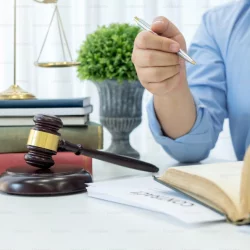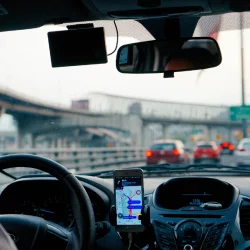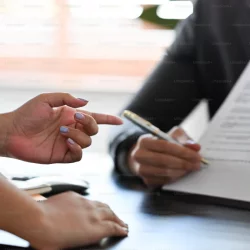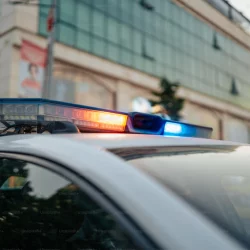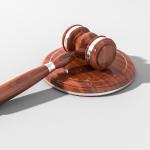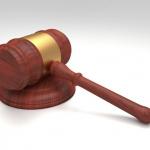The Power of Evidence: Building a Strong Car Accident Claim with Legal Expertise
Car accidents are overwhelming, often leaving victims unsure about the next steps to take. In the aftermath of a crash, gathering and presenting evidence is critical to building a strong claim and securing fair compensation. Without proper evidence, proving fault and the extent of damages becomes challenging, potentially jeopardizing a victim’s financial recovery.
This is where the role of legal expertise shines. Attorneys skilled in car accident claims understand the value of evidence and know how to leverage it effectively. In this blog, we will explore the types of evidence crucial to a successful claim, the challenges involved in obtaining it, and how legal professionals can guide victims through the process to ensure justice is served.
The Role of Evidence in Car Accident Claims
According to www.accidentjusticepro.com, evidence is the backbone of any car accident claim. It provides the proof necessary to establish liability and demonstrate the extent of injuries or damages suffered. For instance, evidence helps clarify whether another driver’s negligence—such as speeding or running a red light—caused the accident. Without this information, assigning blame becomes a matter of speculation.
Moreover, evidence is essential when negotiating with insurance companies or presenting a case in court. Insurers often look for reasons to minimize payouts, so having concrete proof strengthens your position. By demonstrating the full impact of the accident, evidence ensures victims are more likely to receive the compensation they deserve.
Key Types of Evidence in Car Accident Cases
Car accident claims rely on various types of evidence, each contributing to a comprehensive picture of the incident. Accident scene photos and videos are among the most critical forms of evidence. These visuals capture the exact conditions at the time of the crash, including vehicle positions, road conditions, and any visible damages.
Other crucial evidence includes police reports, which provide an objective account of the accident and may indicate fault. Witness statements add credibility by offering additional perspectives, while medical records document the severity of injuries and their connection to the accident. Each type of evidence plays a unique role in building a compelling claim, highlighting the importance of a well-rounded approach.
In addition to these, digital evidence has become increasingly vital in today's technology-driven world. This can include GPS data from vehicles, social media posts, and even text messages exchanged between parties before the accident. Such digital footprints can provide context and corroborate other evidence, enhancing the narrative of the crash. For instance, GPS data may show a driver’s speed or route leading up to the accident, while relevant social media activity can reveal distractions or other behaviors that contributed to the incident. By leveraging all available evidence, including digital sources, victims can build a more robust case that stands up in negotiations or court.
Challenges in Collecting and Preserving Evidence
While evidence is vital, gathering and preserving it is often easier said than done. Accident scenes can change quickly, with vehicles being towed and debris cleared away within hours. Witnesses may forget details over time, and critical documents can be misplaced. These challenges make prompt action essential.
Additionally, not all evidence is straightforward to obtain. For example, accessing traffic camera footage or black box data from vehicles often requires legal intervention. Similarly, dealing with uncooperative parties, such as at-fault drivers or insurance companies, can further complicate the process. Legal guidance is crucial in overcoming these barriers and ensuring that evidence remains intact and admissible.
The Attorney’s Role in Building a Strong Case
Experienced attorneys play a pivotal role in turning raw evidence into a compelling narrative. They conduct thorough investigations, working with accident reconstruction specialists to recreate the events of a crash. These experts analyze factors such as vehicle speeds and impact points to strengthen a victim’s claim.
Attorneys also excel at dealing with insurance companies. Their expertise helps them counter lowball settlement offers by presenting evidence that underscores the true extent of damages. Furthermore, legal professionals know how to navigate the complex process of securing additional evidence, such as medical expert testimony or subpoenaing critical documents. Their involvement can make the difference between a weak claim and a successful one.
In addition to these tasks, attorneys serve as advocates for their clients, providing emotional support during a challenging time. They ensure that victims understand their rights and options, empowering them to make informed decisions. An attorney's guidance can alleviate the stress of navigating the legal landscape, allowing victims to focus on their recovery while knowing that their case is in capable hands. By effectively communicating with all parties involved, attorneys work to maintain momentum in the case, ensuring that no opportunities for compensation are overlooked.
Conclusion: Why Evidence and Legal Expertise Matter
The power of evidence in car accident claims cannot be overstated. It establishes the foundation for proving fault, demonstrating damages, and achieving justice. However, gathering and presenting this evidence effectively often requires the expertise of a skilled attorney.
Legal professionals not only navigate the complexities of evidence collection but also ensure that every detail is used to its fullest potential. Their guidance empowers victims to focus on recovery while pursuing the compensation they deserve. If you or a loved one has been involved in a car accident, don’t leave your future to chance. By combining the strength of evidence with expert legal representation, you can build a claim that delivers the justice and support you need.
More to Read:
Previous Posts:
